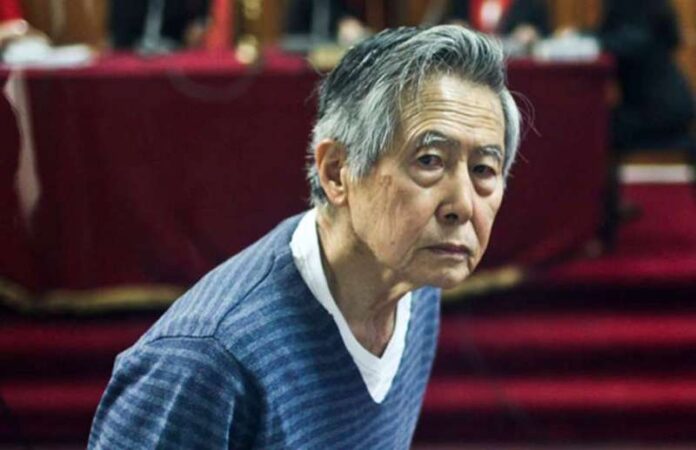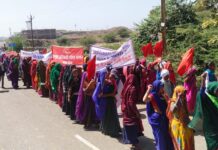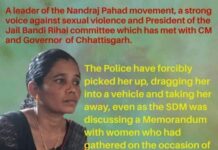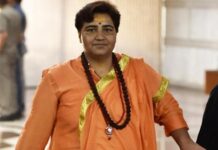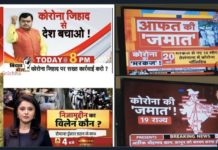In 2017, Alberto Fujimori was granted a pardon for his sentence on humanitarian grounds from President Pedro Pablo Kuczynski. Kuczynski was a right-wing president close to many of the Peruvian elite who had supported Fujimori. Fujimori had already served 10 years of his 25-year sentence, and due to his advanced age and failing health. In March 2022, the Peruvian Constitutional Tribunal held the pardon, meaning that Alberto Fujimori will be free soon. The decision was met with massive protests in Peru, calling his pardon an insult to the victims of his crimes against humanity.
Electing the Dictator
Fujimori has been called Peru’s neoliberal dictator. He was popular in his time, as he mobilized anti-terrorist laws and influence over the media to create a cult of his personality, leading to an unstoppable political force that has hurt Peru to this day. He has been found responsible for genocide and manipulating the democratic institutions in Peru.
For the 1970s, Peru was under an American-backed military rule. In 1980, Peru returned to a military-approved civilian rule. The new government faced an outbreak of internal conflict with the rise of guerilla groups like the Shining Path. The military, fearing popular mobilization against it, and hyperinflation in the late 1980s, created a programme called Operation Green. Operation Green was a plan to keep military control over democracy in Peru by bringing in neo-liberal policies, controlling the media, punishing dissidents and brutal oppression of indigenous people.
Initially, the military tried to control candidacy. They supported Mario Vargas Llosa, a Nobel prize-winning writer, who supported the Army’s neo-liberal policies. Llosa was defeated by Alberto Fujimori. Fujimori was an outsider, son of immigrant Japanese parents. His policies were critical of Llosa’s neo-liberalism, but he did not offer any strong programme of his own. He was an Agricultural engineer and had no history with any other major political struggle, so his victory was unexpected.
He won the 1992 elections. It is likely that on his victory, he made a deal with the military. Once in power, he repeated many of the pro-military and neo-liberal policies that Llosa supported. He said that shock-policies were needed to fight corruption and radical leftist terrorists. He asked the people to trust him as he only had their interests at heart.
Mounting the Military
While pushing these policies, the military intelligence would help Fujimori by cracking down on opposition. The change was so dramatic, that everyone was taken off guard. While this was going on, Fujimori managed to get his cronies into powerful positions in the military. In a turnaround, the civilian government was finally able to control the army, but as Fujimori gained the power of the military, he increased their power to go after his enemies. He said that this was needed in the fight against terrorism.
His political opposition tried to hold him in check with laws aimed and reducing the President’s ability to grant such power to the military. This is when Fujimori instituted a coup against himself. Now ruling Peru through a military government, rather than through the civilian government, he became more brutal to the opposition. He championed a fight against the so-called corrupt politicians and judiciary while filling the courts with his people. The auto-coup did not come against strong resistance as Fujimori’s control over the media painted his actions in a favourable light. Internationally, Fujimori got American support by supporting them in stopping the drug trade.
With such tactics, Fujimori was able to control his image with the population. Many local policies would be directly credited to him if they were popular. When he ended his coup, he won the next election. He also implemented a Constitution that gave him and the military even more powers than before and reduced the checks of the Legislature and Judiciary. Due to his closeness to big business, television news supported him entirely, and very few newspapers could report anything negative about him.
Fall of Fujimori
Scandals began coming out regarding his machination in the late 1990s. The economy was struggling in 1998. Fujimori’s policies of taking credit for all local-level policies eroded the support of his supporters. He became more popular, though he was losing electoral support. His supporters would take the blame, while he would take credit.
Stories of military human rights violations would come out despite the repression of the press. Fujimori tried to protect his allies in the army by passing laws to give the army blanket amnesty on all human rights violations. He also implemented the Emergency Contingency Plan for the Voluntary Surgical Sterilization in 1999, which would bring down the population of Peru’s indigenous population. The program mostly targetted indigenous women and gave quotas and incentives to healthcare workers to carry out as many sterilizations.
Fujimori began to drop in popularity and responded by ramping up the anti-terrorism campaign to keep a stronger hold over the media and political opposition. In the 2000 election, Fujimori won his fourth election for Presidency, but with common stories of election tampering circulating, mass protests came out against him from before the completion of elections. Support for Fujimori dropped quickly. He fled to Japan and faxed his resignation for the Presidency.
Genocide comes to light
In 2001-2003, the new President Alejandro Toledo instituted a Truth and Reconciliation Commission to look into the human rights violations that took place due to the Civil Conflict in Peru through the 1980s and Fujimori’s rule in the 1990s. The TRC was tasked to investigate human rights violations and provide recommendations for the country going forward. The TRC looked into 17,000 testimonies and conducted 27 public hearings. Fujimori was absent from the commission, but the commission did find that nearly 2,00,000 indigenous women were sterilized without their consent as part of his programme. This programme aimed at reducing a local population through sterilization meant that Fujimori was directly guilty of genocide against the indigenous people of Peru and hence was guilty of crimes against humanity.
From Japan to Jail
Despite this, Fujimori planned to contest the elections in 2005. He travelled to Chile, hoping to enter Peru from Chile, but was arrested as soon as he landed. He was extradited to Peru in 2007. He was charged with crimes against humanity. He was given 25 years term, the maximum term allowable in Peru.
Fujimori’s family and his legacy remain a powerful ideological force in Peru. His ties with big business mean that the media has strong support for his policies and legacy. His daughter, Keiko Fujimori, despite her history as a corrupt politician, has come close to the Presidency many times. She runs on a platform of Fujimorism.
Alberto Fujimori’s pardon shows a continuing sympathy to him by the Peruvian elite. His release on humanitarian grounds means that he will live out the rest of his life free, rather than remain in jail until he is 93 years old.

















